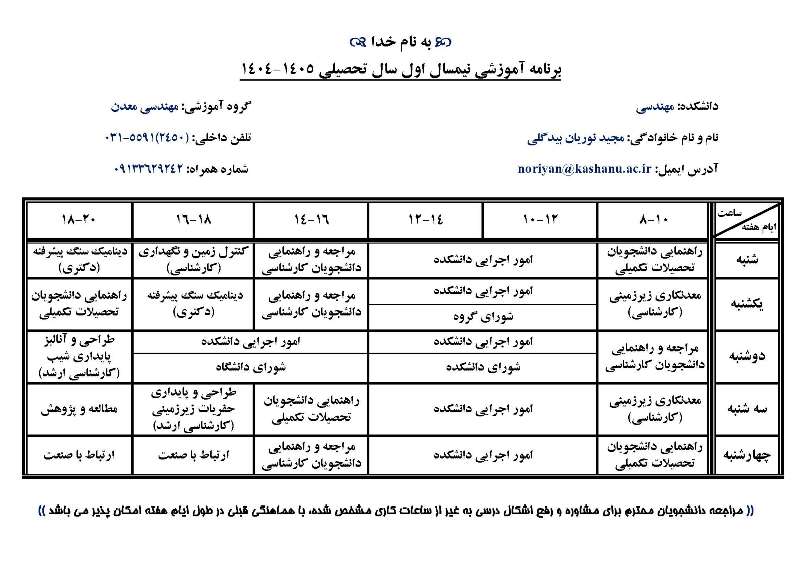| نویسندگان | Majid Noorian-Bidgoli, Zhihong Zhao, Lanru Jing |
|---|---|
| نشریه | Journal of Rock Mechanics and Geotechnical Engineering |
| نوع مقاله | Full Paper |
| تاریخ انتشار | 2013 |
| رتبه نشریه | علمی - پژوهشی |
| نوع نشریه | چاپی |
| کشور محل چاپ | چین |
| نمایه نشریه | ISI ,SCOPUS ,ISC |
چکیده مقاله
Knowledge of the strength and deformability of fractured rocks is important for design, construction and stability evaluation of slopes, foundations and underground excavations in civil and mining engineering. However, laboratory tests of intact rock samples cannot provide information about the strength and deformation behaviors of fractured rock masses that include many fractures of varying sizes, orientations and locations. On the other hand, large-scale in situ tests of fractured rock masses are economically costly and often not practical in reality at present. Therefore, numerical modeling becomes necessary. Numerical predicting using discrete element methods (DEM) is a suitable approach for such modeling because of their advantages of explicit representations of both fractures system geometry and their constitutive behaviors of fractures, besides that of intact rock matrix. In this study, to generically determine the compressive strength of fractured rock masses, a series of numerical experiments were performed on two-dimensional discrete fracture network models based on the realistic geometrical and mechanical data of fracture systems from field mapping. We used the UDEC code and a numerical servo-controlled program for controlling the progressive compressive loading process to avoid sudden violent failure of the models. The two loading conditions applied are similar to the standard laboratory testing for intact rock samples in order to check possible differences caused by such loading conditions. Numerical results show that the strength of fractured rocks increases with the increasing confining pressure, and that deformation behavior of fractured rocks follows elasto-plastic model with a trend of strain hardening. The stresses and strains obtained from these numerical experiments were used to fit the well-known Mohr-Coulomb (M-C) and Hoek-Brown (H-B) failure criteria, represented by equivalent material properties defining these two criteria. The results show that both criteria can provide fair estimates of the compressive strengths for all tested numerical models. Parameters of the elastic deformability of fractured models during elastic deformation stages were also evaluated, and represented as equivalent Young's modulus and Poisson's ratio as functions of lateral confining pressure. It is the first time that such systematic numerical predicting for strength of fractured rocks was performed considering different loading conditions, with important findings for different behaviors of fractured rock masses, compared with testing intact rock samples under similar loading conditions.

